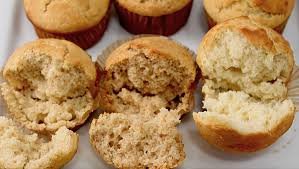Baking can seem intimidating, especially for beginners, but once you understand the fundamentals, it becomes an enjoyable and rewarding experience. Whether you’re trying your hand at cookies, cakes, or bread, learning the basics of baking will help you achieve delicious results every time. In this guide, we’ll walk you through the essential tips and techniques to get started in the world of baking.

Understanding Baking Ingredients
The foundation of any baked good lies in the ingredients you use. Each ingredient plays a vital role in the texture, flavor, and structure of your baked goods.
- Flour: Flour is the backbone of most baked goods. Different types of flour—such as all-purpose, bread, and cake flour—are used for specific purposes. All-purpose flour is the most common, but specialized flours provide different textures and structures.
- Sugar: Sugar not only sweetens your baked goods but also contributes to their texture and color. Granulated sugar is most common, but brown sugar, powdered sugar, and honey can offer distinct flavors and textures.
- Butter: Butter adds flavor and richness to your baked items. It also helps create the desired texture, whether it’s the flakiness in pastries or the moisture in cakes.
- Eggs: Eggs act as binders and leavening agents in many recipes. They also help with texture, color, and the structure of the final product.
- Leavening Agents: Baking powder, baking soda, and yeast are responsible for making your baked goods rise. They create air pockets in the dough or batter, giving it a light and airy texture.
Understanding how these ingredients work together is key to mastering the basics of baking.
Essential Baking Tools and Equipment
Having the right tools can make all the difference in your baking experience. Here are some essentials that every beginner baker should have:
- Mixing Bowls: A variety of sizes is helpful for mixing ingredients, whether you’re making dough or whipping egg whites.
- Measuring Cups and Spoons: Accurate measurements are crucial in baking, so investing in a good set of measuring cups and spoons is essential.
- Baking Pans and Sheets: Depending on what you’re making, you’ll need different pans. A few essentials include a square pan for brownies, a round cake pan, and a baking sheet for cookies.
- Whisk and Wooden Spoon: A whisk is great for mixing dry ingredients or whipping eggs, while a wooden spoon is perfect for stirring dough or batters.
- Oven Thermometer: Ovens can often run hotter or cooler than their settings indicate. An oven thermometer helps you ensure that your baked goods are cooked at the correct temperature.
Investing in these essential tools will make your baking process smoother and more efficient.
Baking Techniques Every Beginner Should Know
Before you dive into complex recipes, it’s helpful to understand some fundamental baking techniques. Mastering these basics will improve your results and give you confidence in the kitchen.
- Mixing: When combining dry and wet ingredients, be careful not to overmix. Overmixing can lead to dense and tough baked goods, especially in cakes and muffins. Mix until ingredients are just combined.
- Folding: This technique is used when incorporating delicate ingredients, such as whipped cream or egg whites, into a batter. Gently fold the ingredients together with a spatula to retain air bubbles and preserve the lightness.
- Sifting: Sifting dry ingredients, such as flour and cocoa powder, ensures they are evenly mixed and free from clumps. This step can make a big difference in the final texture of your baked goods.
- Preheating the Oven: Always preheat your oven to the required temperature before placing your baking pan inside. This ensures that your baked goods cook evenly and rise properly.
- Checking for Doneness: Most recipes will suggest a time range for baking. However, it’s always best to check your baked goods for doneness by inserting a toothpick or cake tester into the center. If it comes out clean, your baked item is ready.
Common Baking Mistakes and How to Avoid Them
Even experienced bakers make mistakes from time to time. However, knowing what common errors to look out for can help you avoid them in your own baking adventures.
- Incorrect Measurements: Baking is a science, so accurate measurements are essential. Always measure ingredients correctly, using proper measuring cups and spoons.
- Not Following the Recipe: While it’s tempting to make substitutions or skip steps, baking recipes are designed to work together precisely. If you’re a beginner, follow the recipe as written for the best results.
- Opening the Oven Too Often: Resist the urge to open the oven door while baking, as this can cause temperature fluctuations. Only open it to check for doneness when the recommended time is almost up.
- Overmixing the Batter: Overmixing batter can lead to dense or chewy cakes and muffins. Mix until just combined, and remember that a few lumps are okay.
Conclusion
Baking is a fun and creative process that can bring joy to any home. By understanding the ingredients, tools, and techniques, you’ll be well on your way to creating delicious baked goods. Remember to follow recipes carefully, use accurate measurements, and practice the basics to build your baking skills. With time, patience, and a bit of practice, you’ll become a confident baker who can tackle any recipe that comes your way.

